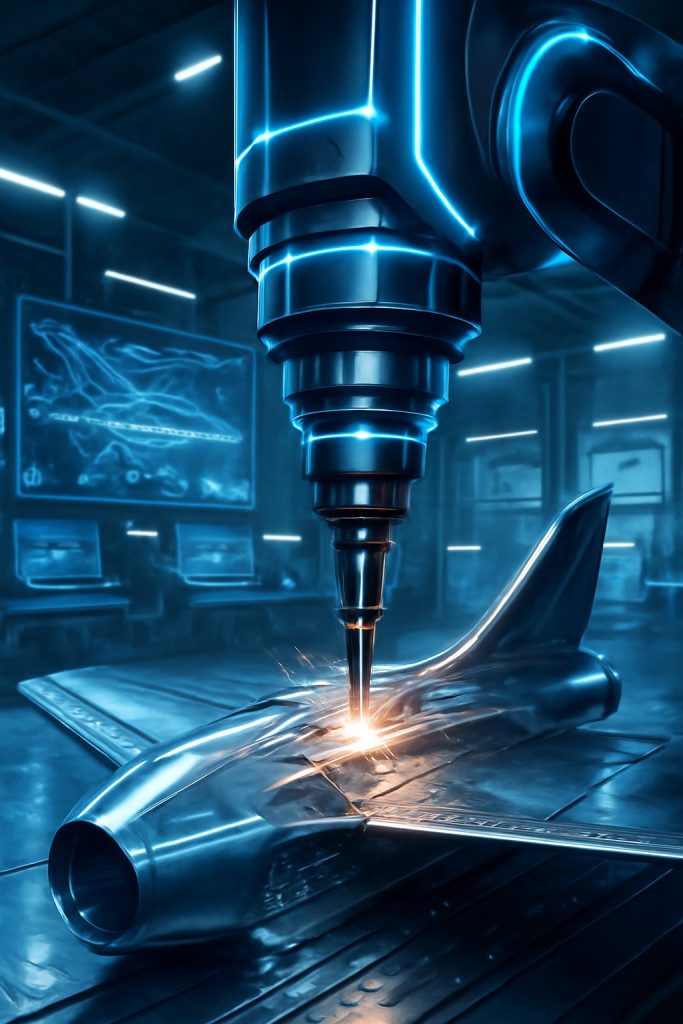
The aerospace sector demands absolute precision, advanced materials, and uncompromising reliability. From turbine blades to fuselage structures, every part must meet stringent safety and performance standards.
This is where CNC machining (Computer Numerical Control) is reshaping aerospace engineering. By combining automated precision, multi-axis capability, and compatibility with advanced materials, CNC machining enables manufacturers to meet aerospace challenges with unmatched accuracy and speed.
Companies like BOONA Prototypes are at the forefront, offering CNC machining, rapid prototyping, and low-volume manufacturing that empower aerospace innovation worldwide.
I. CNC Machining Capabilities Driving Aerospace Innovation
1. Precision and Tight Tolerances
Aerospace components require micron-level tolerances. CNC machines consistently achieve this, ensuring critical parts like turbine blades and landing gear function reliably.
| Parameter | Requirement in Aerospace | CNC Machining Capability |
|---|---|---|
| Dimensional Tolerance | ±0.001–0.005 mm | Achievable with 5-axis CNC |
| Surface Roughness | Ra 0.8 µm or better | CNC polishing & finishing |
| Repeatability | ≥ 99.9% consistency | Automated process control |
2. Handling Complex Geometries
Modern aerospace designs often include curved wings, intricate cooling channels, and lightweight lattice structures. Multi-axis CNC machines (3-, 4-, and 5-axis) allow machining of these geometries in a single setup, reducing human error and production time.
3. Material Versatility
CNC machining supports the advanced materials vital in aerospace:
| Material | Properties | Aerospace Applications |
|---|---|---|
| Titanium Alloys | High strength-to-weight ratio, corrosion resistance | Turbine blades, engine casings |
| Aluminum Alloys | Lightweight, excellent machinability | Structural components, ribs, panels |
| Composites | High stiffness, fatigue resistance | Fuselage structures, interiors |
| Stainless Steel | Durability, heat resistance | Landing gear, fasteners |
👉 Learn more about material options from BOONA Prototypes CNC machining services.
II. Efficiency and Cost Savings
1. Faster Prototyping
CNC machining significantly reduces lead time, enabling aerospace companies to move from CAD design to physical part in days instead of weeks.
2. Waste Reduction
CNC optimizes material use by following exact digital models, reducing scrap rates—especially important when machining expensive materials like titanium.
3. Scalability
Whether producing one-off prototypes or full-scale production runs, CNC machining provides consistent results. This flexibility is vital for both R&D testing and commercial fleet manufacturing.
III. Real-World Aerospace Applications of CNC Machining
| Application | CNC Machined Part Examples |
|---|---|
| Engines | Turbine blades, nozzles, engine casings |
| Structures | Wing ribs, fuselage brackets, spars |
| Avionics & Interiors | Instrument housings, enclosures, panels |
| Maintenance & Repair | Re-machining worn components to spec |
BOONA Prototypes supports these applications with low-volume manufacturing and rapid prototyping solutions.
IV. Innovations Reshaping Aerospace CNC
-
AI & IoT Integration – Real-time machine monitoring, predictive maintenance, and AI-driven programming reduce downtime and errors.
-
Hybrid Manufacturing – Combining additive manufacturing (3D printing) with CNC machining creates optimized lightweight structures.
-
Digital Twins – Virtual simulations reduce trial-and-error machining, cutting costs and lead time.
V. Case Study: Boeing 787 Dreamliner
The Boeing 787 Dreamliner leveraged CNC machining for molds and tools to build its composite fuselage. CNC’s precision enabled lighter structures, better fuel efficiency, and extended range.
VI. Challenges and Considerations
-
High capital investment in advanced CNC systems.
-
Need for skilled CNC programmers—though AI-driven CAM software is helping close the skills gap.
-
Strict compliance with aerospace certifications (AS9100, ISO 9001).
Conclusion
CNC machining is not just a manufacturing process—it is a pillar of aerospace innovation. From precision turbine blades to lightweight fuselage structures, CNC enables safer, more efficient, and more advanced aircraft.
As aerospace continues to evolve, integration with AI, additive manufacturing, and digital technologies will ensure CNC machining remains the backbone of the industry.
To explore advanced CNC machining, prototyping, and manufacturing services, visit BOONA Prototypes.
FAQs
1. Why is CNC machining important in aerospace manufacturing?
CNC machining ensures micron-level precision, repeatability, and reliability, which are critical for safety and performance in aerospace. It also allows the use of advanced materials like titanium and composites that meet strict industry standards.
2. What aerospace components are made using CNC machining?
CNC machining is widely used for:
-
Engines: turbine blades, nozzles, engine housings
-
Structures: wing ribs, brackets, landing gear components
-
Avionics: instrument housings, control panels
-
Interiors: lightweight trim and enclosures
3. What are the advantages of CNC machining over traditional methods in aerospace?
-
Higher accuracy with tolerances down to ±0.001 mm
-
Multi-axis machining for complex geometries
-
Material efficiency with minimal waste
-
Faster turnaround for prototyping and production
-
Scalability from low-volume to mass production
4. How does CNC machining improve aerospace safety?
Aerospace safety depends on parts performing reliably under extreme conditions (high temperature, vibration, pressure). CNC machining ensures consistent tolerances and repeatability, minimizing the risk of component failure.
5. What materials are most commonly used in aerospace CNC machining?
-
Titanium alloys – high strength and corrosion resistance
-
Aluminum alloys – lightweight and machinable
-
Composites – durable and fatigue resistant
-
Stainless steel – durable for landing gear and fasteners
For details on material options, see BOONA Prototypes CNC Machining.
6. Is CNC machining cost-effective for aerospace applications?
Yes. While the upfront cost of CNC machines is high, aerospace manufacturers save money through reduced waste, fewer errors, and faster production cycles, making it highly cost-effective in the long term.
7. How is CNC machining evolving with new technologies in aerospace?
-
AI-driven CAM software reduces programming time
-
IoT-enabled machines improve real-time monitoring and predictive maintenance
-
Hybrid manufacturing (CNC + 3D printing) allows for lighter, more complex structures
-
Digital twins help simulate and optimize machining processes before production



